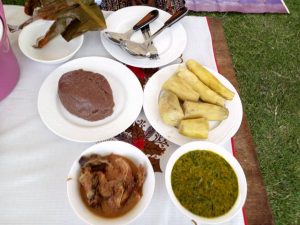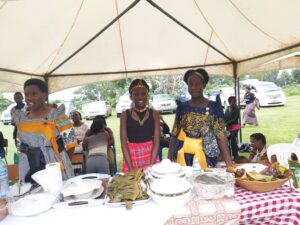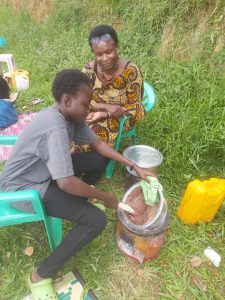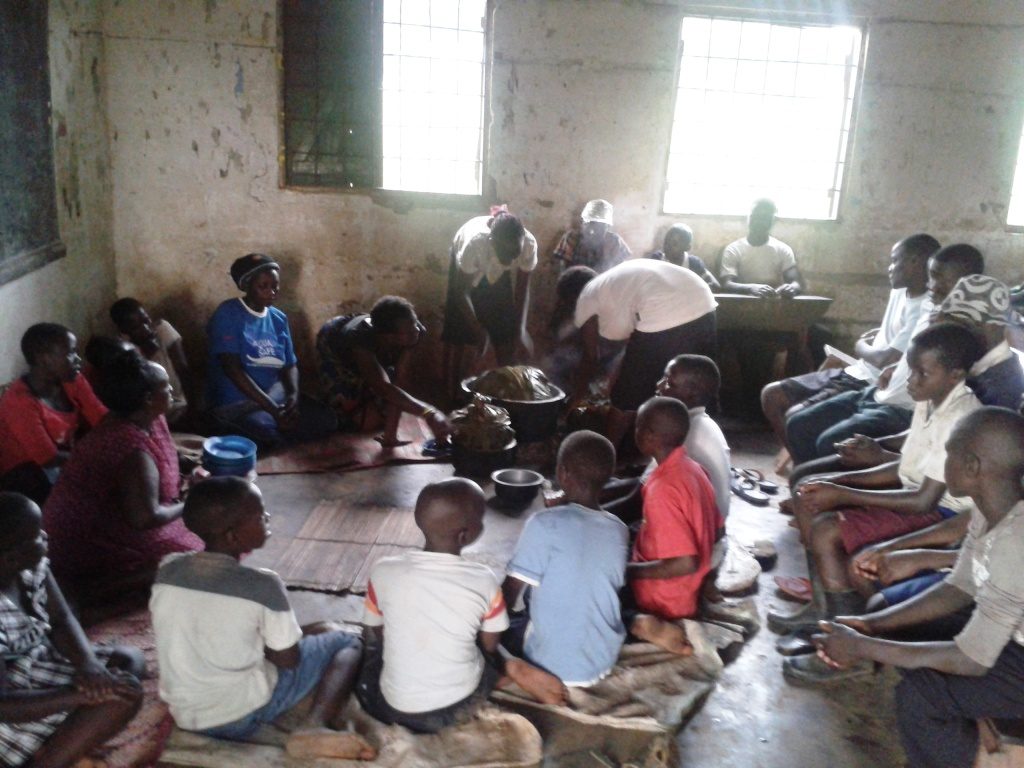The Gayaza High School annual cultural day successfully happened on the 5th October 2019 with the theme “Our culture our identity”. 95% of the S1 parents participated in this year’s cultural day celebrations where they prepared and exhibited the traditional foods from the different corners of Uganda. All the four regions from Uganda i.e. Northern, Eastern, Western and central Uganda where represented. The regions were divided into four i.e. Northern, Western, Eastern and Central Uganda.



In term two holiday the S1 students are given tasks by the Foods and Nutrition department to go and research about their cultural cuisines which they have to practice cooking with their parents and Jajas. They document the process with a write-up and video recording which they carry to school when term three opens. The beauty of this is that the girls connect to their cultural identity which many have forgotten due to modern times and this builds a patriotic citizen who clearly understands own countries’ cultural norms.
Having started in 2011 by the patriotism club, the cultural day was initiated to inculcate the cultural values and norms that would expose the students to the different cultures in Uganda and was being celebrated every Uganda independence day. In 2015 it was opened to parents of S1 students to come and exhibit the different foods from their regions.
Culture is defined as the beliefs, values, and attitudes practiced and accepted by members of a group or community. Culture is not inherited; it is learned. The food choices of different cultural groups are often connected to ethnic behaviors and religious beliefs.
“Eating is a daily reaffirmation of [one’s] cultural identity”. Many people affiliate the foods from their culture, their childhood with warm, good feelings and memories. The food is part of who we are and become. It ties us to our families and holds a special worth to a person. Foods from our culture, from our family often become the comfort foods we seek as adults in times of frustration and stress
Cultural awareness and tradition play important roles in helping students develop a positive sense of identity and build self-esteem as well as love for the country as they appreciate their cultures. It also develops a strong foundation of belonging and acceptance through cultural celebration. Students are able to create a diverse social network while transitioning into adulthood. A student from Eastern Uganda should be aware of the foods from other regions of central, western and Northern. During the teaching of cultural dish preparations parents are able to go through stories which can be passed down through generations as life lessons are also passed. Tales of cultural history can provide a well-rounded view on cultural heritage. When parents help their children explore their family tree, they make their heritage rich and diverse. Children eventually become more confident about their confidence and identity.

Northern Uganda
Common in Northern Uganda was the Gnut pasted fish, pasted roasted meat, pasted chicken and green vegetables mixed with gnut popularly known as eboo. Malakwang source was also exhibited as one of the vegetable source from Northern Uganda which they say is highly nutritious and is eaten with cassava, sweet potatoes and Kalo (millet posho). In the northern region was also a special fish Alestes Baremose fish species commonly referred to as Angara in West Nile region a delicacy among the Alur speaking people in Nebbi, Zombo and Pakwach districts. It is also specially preserved for elders and visitors and some use the fish for treating small pox.
Eastern Uganda


The Eastern Region comprising of the Basoga, Bagisu, Sebei, Teso, Samia, Bagwere among others also show cased the foods they had prepared. The famous malewa from bamboo shoots was show cased from Bugisu, eboo vegetables from Teso, mashed beans with sweet potatoes from Busoga. The easterners also displayayed millet bread commonly called Atapa which they prepare mainly with some cassava and can be eaten with any sauce. They also showcased sauce mixed with gnuts.


Western Uganda
From western Uganda, there was exhibition of equally tasty sauces scraped out of cow butter and salt to make eshabwe which they served with kalo (millet). The westerners cook their meat in pots in a way of preserving nutrients and mixing with eshabwe is a must. In all the exhibitions from western region millet bread served in nice looking small baskets is served and it is said it is the favoured dish. The milled flour is mixed with cassava and then mingled. The Batooro peel the skins off beans and mash them into a thick paste (firinda) to which they add cow butter and salt to make a really tasty relish that goes well with millet.


Central Uganda
Then come the central part of Uganda dominated mainly by the Baganda. The popular food exhibited on cultural day included the popular local dish of matooke (bananas of the plantain type) which they served with peanut sauce, fresh fish, meat or entrails. Matooke really goes with any relish. The best and most respectable way the Baganda cook it is by tying up the peeled fingers into a bundle of banana leaves which is then put in a cooking pan with just enough water and then left to steam. This style of cooking preserves all the flavours. When ready and tender, the matooke is squeezed into a soft and golden yellow mash. In Buganda, the food production process revolves around the banana plants and no wonder who ever displayed had matooke as part of the dish. In central Uganda was also the famous Luwombo of chicken, Gnuts, meat, gnut in fish, mushroom, green vegetables and etc. Luwombo has been a royal dish since the year 1887 and it is commonly prepared for exceptional events in Buganda for instance, the introduction ceremonies where the groom visits the brides home to meet her parents. Common among the prepared dishes were also stem tubers of yams (Mayune), cocoyams and pumpkins.
In the chief guest remarks, Mr. Ddungu Ronald a former Deputy Head teacher at Gayaza High School thanked the parents for inculcating the cultural values into their daughters and he urged them to continue teaching them about their cultures. He cited the former students of Gayaza High school in 1952 who were training the community in food preparations with high nutritional value
Compiled by Mr. Milton Chebet, Patron Patriotism Club

